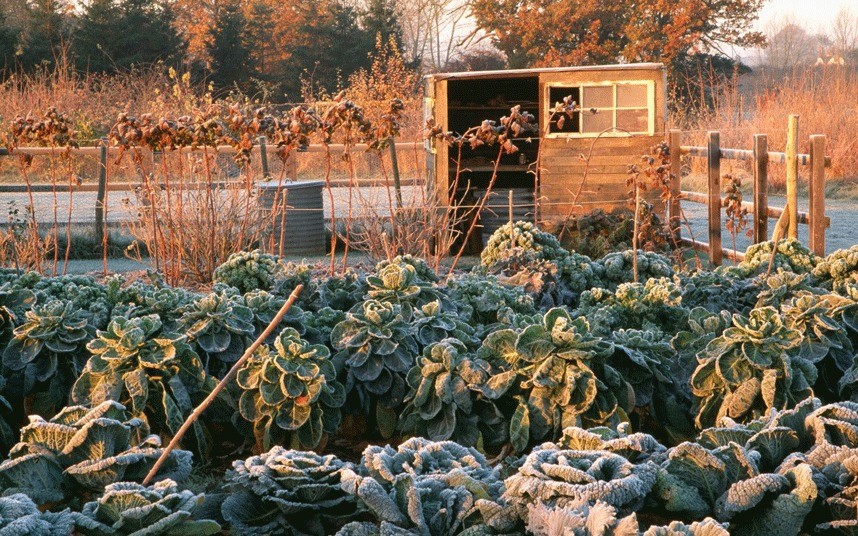Final Up to date on October 19, 2020
First let’s give a nod on the rising zones which might be simply getting into or hitting the primary strides of their manufacturing seasons. Better of luck to you!
For many people within the northern hemisphere, rising season is winding down. We could also be extending our manufacturing with row covers, greenhouses, indoor veggies and greens, and sprouts, or we could also be hanging up our gloves for a whole break.
Winter or summer season, anytime we’re going to let our gardens or some portion of them go dormant, some easy preparations will help decrease our workloads and improve their productiveness for the following season.
Take a look at Now
Whereas issues can change on account of soil exercise and temperature, even if you happen to’re already getting frosts or snows, go forward and take a look at your soil pH and vitamins. You are able to do fundamental exams at house for little or no value. Most extension providers additionally supply testing, together with a battery for micro-nutrients utilizing plant matter, so name round to see if that’s an possibility.



Most amendments, particularly on the pH and main deficiency fronts, do finest if they’ve a while to groove earlier than planting. For those who’re making important adjustments, it’s often beneficial to take action incrementally verses dumping tons in a single go. The quicker we learn about a pattern, the quicker we are able to handle it and get again to max productiveness.
*Don’t ignore this one when you’ve got pots and planters – they’re as susceptible as raised beds and may profit similar to beds and row-crop plots.
Unfold & Begin Compost
Fertilizing early additionally applies to compost, completed or partially completed, or uncooked.
Trench, gap and tube composting in-situ permits microbes to work over uncooked supplies via the verges of our seasons. Spreading completed or partially completed compost on the floor additionally permits vitamins to permeate downward and for microbes and helpful bugs to work it into the floor.


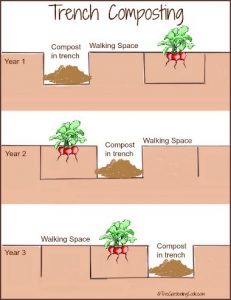
We are able to additionally go forward and until or fork completed or partially completed compost into the floor of soils for a similar results. Soil will probably be higher conditioned initially of planting.
Composting supplies – to incorporate the “secure” manures – also can assist us if we use greenhouses, chilly frames, or plastic row covers. Composting requires some heat, but it surely additionally generates warmth of its personal. By doing pits or trenches to fill with compost, we are able to really lengthen the rising season for a few of our tenders and our cold-hardy crops.
The compost that develops over autumn and winter will probably be prepared to assist feed areas of the backyard that want a spring enhance. In cool areas the place it gained’t utterly end, it’ll nonetheless be dashing up the method for us.


Greenhouses
Wash off any mud or pollen that’s constructed up on the roof or sides via the season to maximise the daylight crops will probably be getting. A pressurized hose nozzle or energy washer also can take away the leaves that can or are already falling.
Don’t neglect the inside. Greenhouse glass or plastic can find yourself coated by “laborious water” and “cleaning soap scum” mineral deposits as condensation and irrigation spray evaporates, decreasing the quantity of sunshine that will get via.
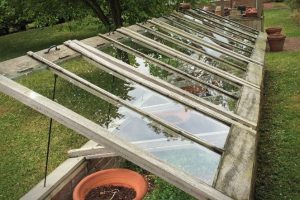
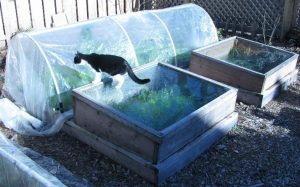
Out of doors chilly frames and row cowl plastic could be tougher, however also can profit from spraying or dismissing pollen and grime, gentle options to take away evaporation buildup, and a few visible inspections for put on, holes, and rips.
That is additionally a superb time to verify for holes in screens and drafts in window joints and on the door(s). Including reflectors and warmth sinks like black hoses, buckets, and bottles crammed with water can additional lengthen seasons.
Clear-up season may also be a very good time to run disinfectant protocols and verify preps for winter-spring greenhouse pests.

Gardens Like Cozying Up Beneath Blankets, Too
One of many greatest, best boosts comes from leaving as little naked, flattened earth as doable over our dormant season. Cowl crops and a particular manner of tilling for sloped areas will get lined in a bit, however one of the vital efficient methods to mattress down gardens is to tuck them in with a pleasant blanket.
Tarps forestall soil erosion and compaction from rains and any snowmelt. Particularly for raised beds and planters or containers, diverting rains and snowmelt additionally means much less nutrient wash-out.
“Tarps” on this case means something that spreads flat– cardboard, plastic, wooden paneling, strips of metallic roofing, salvaged kiddie swimming pools. Some sorts of carpets, curtains, and blankets may also be efficient.
Container gardeners have it very easy, and may simply slide trash luggage over their pots and planters.

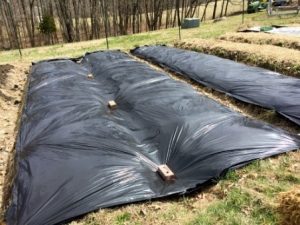

Tarping additionally forestall weeds from being blown or carried in, and most sorts listed above will block daylight, ravenous weeds under.
In lots of circumstances, they’ll additionally create hotter soil situations. That can preserve our soil life lively later and earlier within the season. (That’s each pro-con if pests begin digging via them looking our bugs.)
Mulching delivers lots of the similar advantages. Mulch is available in all kinds of sorts and kinds – entire leaves we rake from our timber, chipped leaves, leaf mould and compost we developed over the rising season, pine or grass straw, wooden chips. Mulches may also be mow-down, crimp, or cold-kill cowl crops.
Relying on our local weather and whether or not we’ve got “woody/laborious” mulches (wooden chips, entire leaves) or “gentle/inexperienced” mulches (garden trimmings, leaf mould, buckwheat and mustard covers), our mulches could break down sufficiently over the season to be tilled in or planted via come spring. Others could must rake them off, furrow via them to reveal soil for a planting go, or use no-till strategies, particularly for the woodier sorts.
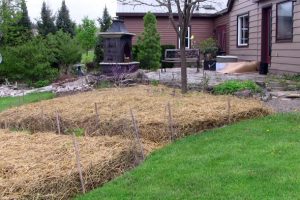

A number of the warnings about mulching are justified. In some circumstances, the “risk” is definitely one thing I’m aiming for or think about a bonus – like pine and oak mulches growing acidity in beds.
For those who’ve had a booming acorn 12 months (walnuts or pecans, too), you may need to do some winnowing so fewer find yourself planted in your good, fertile backyard soil to turn out to be a pest.
We positively need to be very cautious if we’re chipping privet for mulches. Privet needs to be outlawed, and may survive some unimaginable horrors, then turn out to be a actual pest. Discard any berries and sift via for small branches that escaped the chippers to keep away from issues.
Additionally skip mulches produced from timber that share ailments with our crops and ergot-infected grasses.
If we’ve got main flea beetle or slug issues, some mulch sorts will exacerbate them and we could need to apply different measures to guard soils over the dormant season.

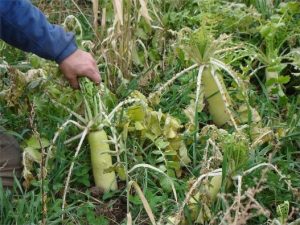
Cowl Crops
It’s not as straightforward to mattress down an entire subject, particularly late within the season. If there’s time in your rising zone but, you could possibly get a canopy crop in, or autumn-sow a canopy that can come up in spring for some safety.
Buckwheat sprouts and grows quick, and may present some die-down soil cowl. Radishes and mustards are additionally fast and each have some further advantages, particularly if you happen to’ve had pest issues earlier within the 12 months, however think about your upcoming crop rotations with them.
Cowl crops additionally apply to smaller beds, and there should still be time in some zones for issues like autumn-sown, spring-harvest grains.

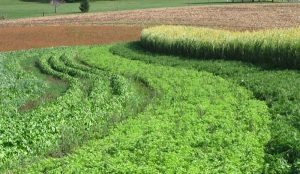
Tilled Plots
For those who’re previous the purpose of planting with a subject or plot maintained with until cropping, there are nonetheless a few issues that can assist.
One, depart standing stubble until it’s going to be a pest/illness host.
If it’s already naked, turned in, or has solely sporadic plant matter, go forward and get one other until in. Double-cut throughout the face of contours to type exaggerated furrows (ridge-and-furrow irrigation type).
Versus a plot that’s already packed down flat and naked, each stubble and the undulating floor will gradual and catch extra of winter’s rains and any snowmelt, growing infiltration and decreasing erosion and nutrient runoff.
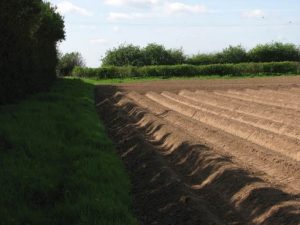

Exaggerated furrowing additionally means much less spring flood inundation, creating hotter and fewer compacted soils that may be labored earlier within the 12 months.
If the plot is sufficiently small, go forward and establish the place you’ll be actively planting and the place you’ll be driving or strolling. Overlaying simply your rising area could also be doable, defending that soil and reducing the weed load. Any of the covers from tucking in smaller beds apply – weighted tarps and cardboard, compost, straw and leaf mulches.

Bedding Down Gardens
A couple of easy steps can have large impacts on our gardens after they’re not in manufacturing, whether or not we’re going dormant for busy or arid or sweltering seasons, partly or in full, or for winter. Particularly in areas the place we get as many rain and thaw days as we’ve got frigid days and protracted snow cowl, defending beds, planters, and row plots from weeds and runoff will help enormously once we’re prepared to interrupt floor once more.
Working forward to enhance yields subsequent 12 months doesn’t should be costly. We are able to supply espresso for fertilizer, all types of tarp replacements, and pine straw and leaves with out spending a dime. In different circumstances, we are able to enhance our productiveness with $5-$25 testing.
Most bed-down practices additionally apply if we’re planning to increase our gardening subsequent 12 months, particularly with regards to soil testing, soil construction amendments, and decreasing the weed hundreds we’re going to face. “An oz. of prevention equals a pound of remedy” is just about universally true. It applies exponentially with regards to our dormant and future backyard areas.
Comply with The Prepper Journal on Fb!

